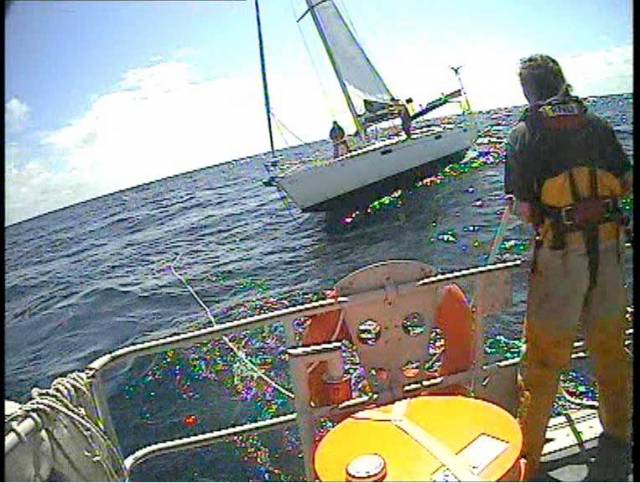#RNLI - Ballycotton RNLI launched their all-weather lifeboat yesterday morning (Saturday 22 July) following a request from Falmouth coastguard, who reported the activation of an emergency beacon some 60 miles off the Cork coast.
The three-person crew of a 40ft yacht had activated their EPIRB as the vessel was taking on water and needed immediate assistance.
Ballycotton’s lifeboat crew launched at at 9.28am — and resulting tow saw the lifeboat crew on service for 14 hours, eventually bringing the vessel and its crew into Crosshaven last night.
Sennen Cove lifeboat and the coastguard helicopter from Newquay were also dispatched to the scene, but were stood down with the arrival of Ballycotton RNLI and the Irish Coast Guard helicopter Rescue 117.
Once it was confirmed that the water was receding, Rescue 117 was stood down and Ballycotton RNLI established a tow with the vessel to bring it safely to Cork Harbour.
With the lifeboat being such a long distance off shore, radio coverage was challenging. The vessel Ocean Spey, which was on standby at the gas fields halfway between the Cork coast and the yacht, helped by relaying comms between the lifeboat and the coastguard.
“This was one of the longest callouts for our lifeboat crew as they spent nearly a day at sea,” said Ballycotton RNLI coxswain Eolan Walsh.
“Many agencies and vessels played a part in the successful resolution of this and thankfully nobody was injured with both crew and yacht been brought safely to shore.
“I want to thank my volunteer lifeboat crew who despite the challenging conditions were focused on bringing everyone home safely.”
































































